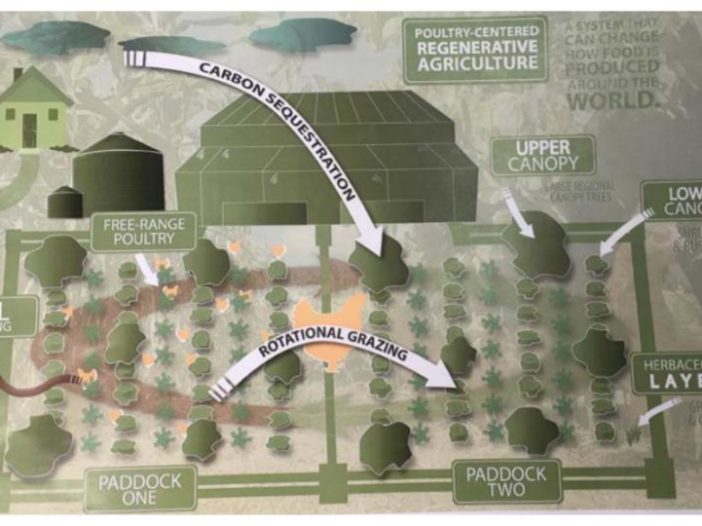

Free range chicken rearing appeals to many poultry beginners.
Mainly because it’s the picture perfect ideal for our image of poultry farming.

An open range, virgin pasture, tree-lined windbreak and hundreds or thousands of Rhode Island Red’s rummaging and roaming for forage.

And as for the many parts of the world where Rhode Island is fathomed an exotic…
The dream of rearing a locally sought after breed (perhaps Kadaknath or Road Runner, for example) in the backyard or adjoining land equally holds a certain nostalgic allure.
But whether we say free-range or backyard, rearing poultry predominantly in the outdoors is our topic of focus here today.
By appearance alone, free range poultry farming is far cry from the indoor caged, semi-intensive model.
And reports show that the free range approach is fast growing in popularity.
This is stirring both new entrants and existing producers in their droves to get invested.
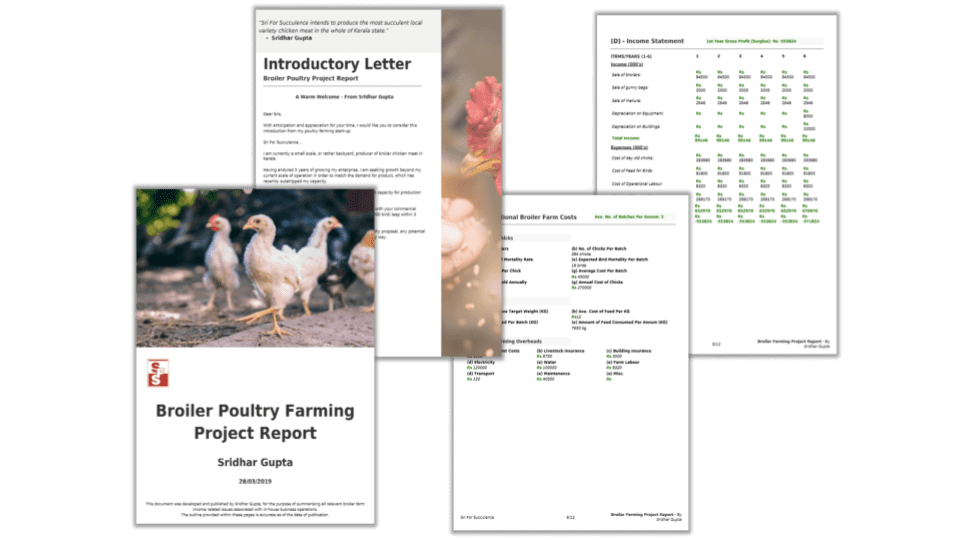
Poultry Project Reporter 2.0 - fastest way to write your project report online.
Consumer trend.
People across the world in increasing numbers are preferably looking for free range meat, avoiding intensively raised product and are willing to pay premium.
What’s driving this?
For some, it’s fashion. Others, it’s personal health. For many, the idea of improved animal welfare.
But ultimately, whatever the motive, dishes like this Kadaknath curry are fast selling out in restaurants and free range meat and eggs are flying off retail shelves:

It’s undeniable that ‘free-range’ or ‘local, country bred birds’ is a globally sustainable economic trend. And is driving the adoption of this non-industrial agricultural modes of production.
In this article, I will show you how to start your own free range poultry farming business – regardless of country or breed.
Free range poultry holds different meanings depending on country.
And in some as governed by law.
“Free range birds must have access to the outdoors . However, since there is no legal definition of free range in Canada, this can vary from farm to farm.”
Source : Association of Canadian Chicken Farmers
“For broilers to qualify as free range, the Broiler Production Code of Practice specifies that no more than fifteen birds may be kept per square meter in the poultry shed or housing.”
Source : southafrica.co.za
“…10 hectares of open land for them to run around on, as demanded by law…every free-range farmer knows that if you have 10 hectares, the chickens will only use nine…we have 6.7 hens per square metre. A free-range farm would typically have nine hens per square metre.”
Source: The Guardian
Top Tip: It’s fundamental to get your local legal definition of free range poultry farming.
Compared with semi-intensive models, small scale free range poultry farming has the following advantages:
However, as prerequisite, for small scale free-range poultry farming you do need:
Because of the points above, free-range typically favours owner/managers with experience of handling flocks. Their level of stockmanship naturally makes them competent to tackle the rigours of the discipline.
That said, previous experience is NOT essential.
Take Senthilvela, for example:

A former IBM IT project manager with no prior poultry farming experience.
Yet, today, he’s a very successful free range poultry farmer.
…as long as you have a keen inquisitiveness and attention to detail regarding flock care – you too can make a good go of it.
Knowing Your Flock (KYC) with free-range poultry is perhaps of greater importance, especially as you are managing variable environmental factors.
Free-range poultry farming is on trend, globally.
The degree of demand varies, from country to country as you can imagine – and we’ll later look into specific examples.
But for now we’ll take the following case in isolation to identify the principle drivers of free-range poultry demand:
Irrespective of the specific numbers and stats involved (because they may not be applicable to your country) take a look at the economic factors in the example above, which are driving the free-range trend.
It’s critical at this stage to make clear the difference between free-range and organic.
Here are two distinctions laid out by leading institutions:
As opposed to standard free range farms where anything goes feed-wise, organic farms must stick to synthetic chemical-free feeds. To be officially recognised as an organic farm, hens must only eat pure, organic feed and no nasty animal by-products like egg shells and ground bones.
Source : Foundation Education
Simply speaking, there are 2 modes of operation for a free range poultry farm:
1. Access to outdoors via a run from a coop
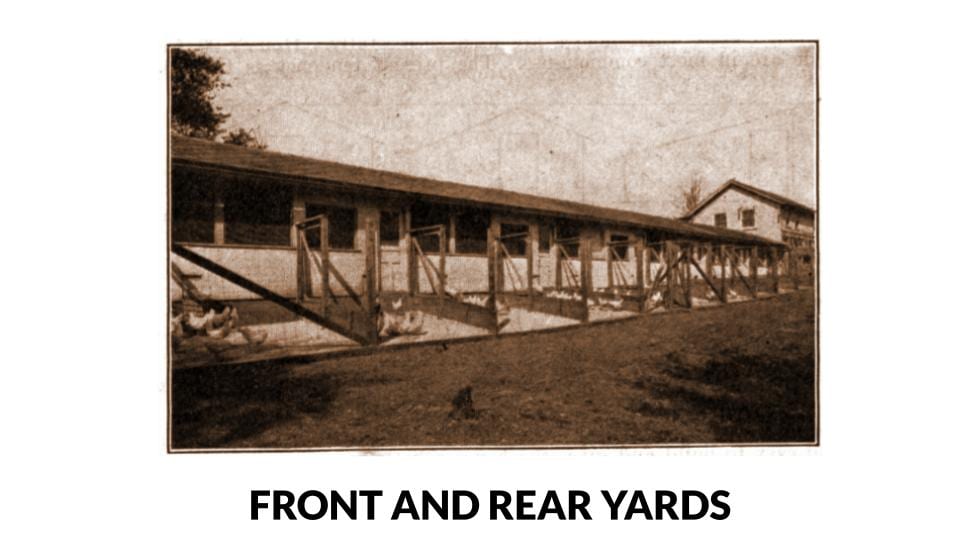
2. Access to an open field, or pasture
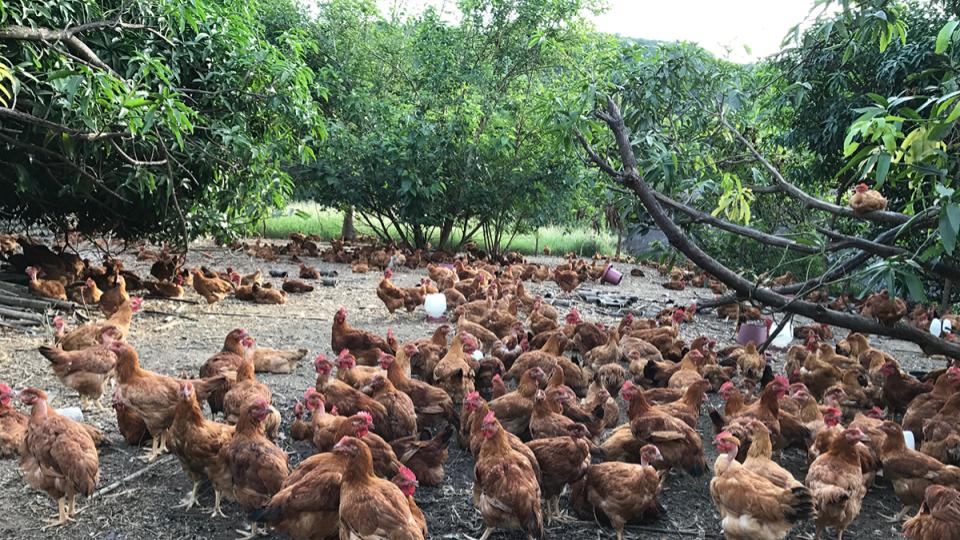 Range Poultry Farm in the Philippines" />
Range Poultry Farm in the Philippines" />
*Plus, Flock Mobility
One model variation which can be applied to both models above, and adds a twist on the theme is mobility.
The land becomes nutritionally diminished as a consequence of continual feeding.
Birds need their foraging grounds to recover and become replenished.
To assist in resting the land, some farmers move the flocks and rotate plots (otherwise known as Pastured Poultry).
And there are multiple ways of moving a flock.
Here are a few options:
Wagon train coops
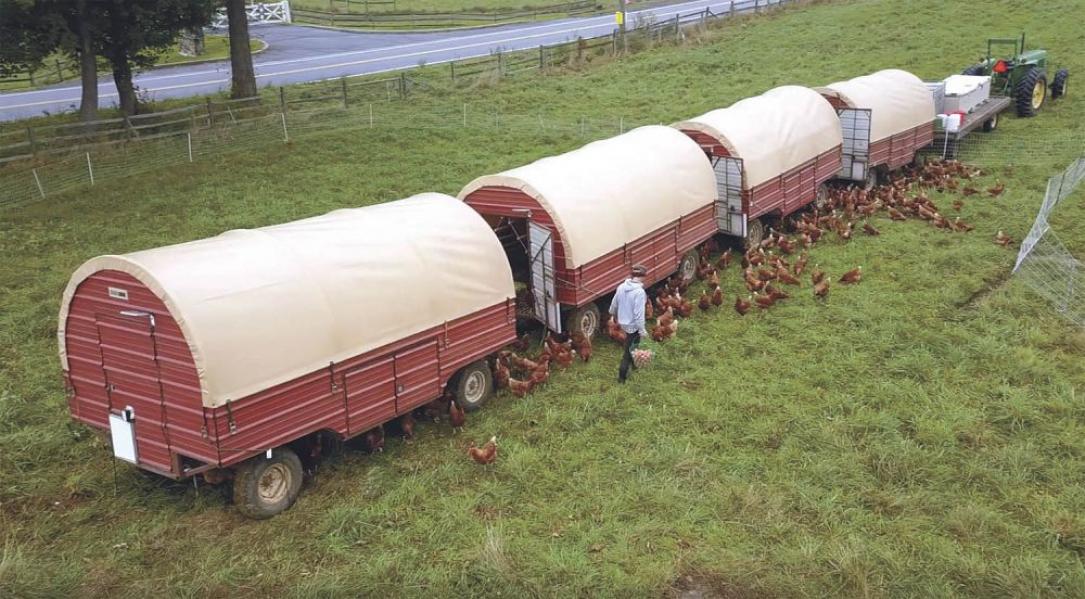
Coop on a cart
A-Frame mobile coop
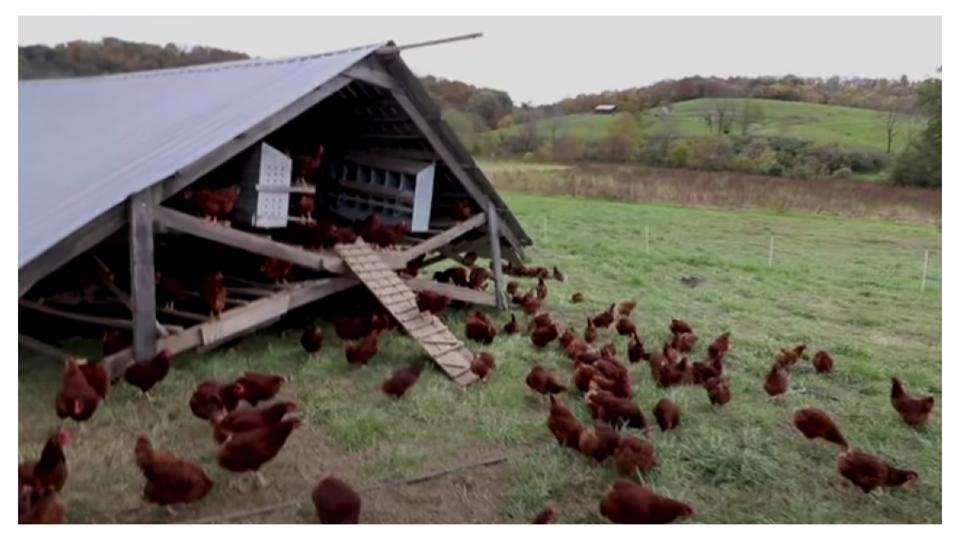
The principle remains the same, although the exact vehicle type may differ.
Regenerative poultry models
As an alternative to the mobile free range poultry units is regenerative poultry.
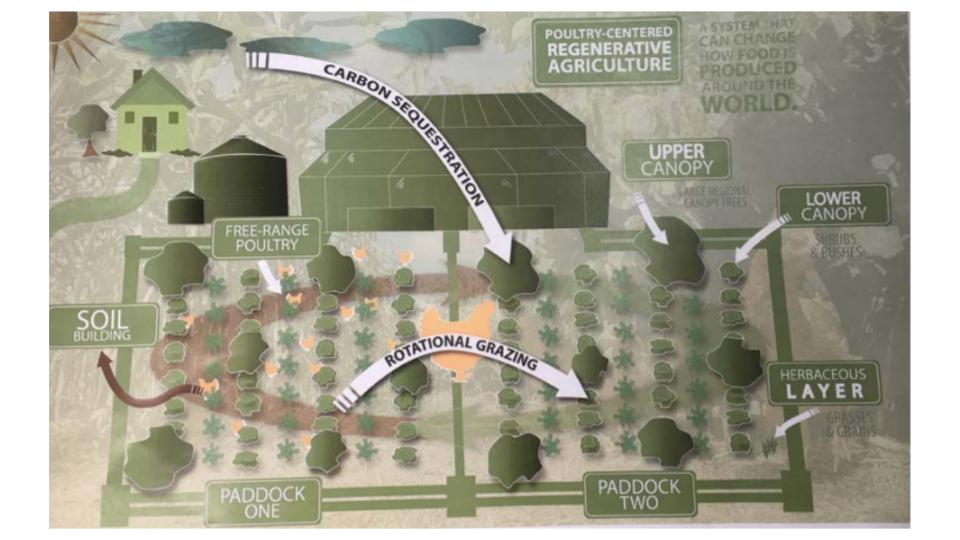
The land’s nutrient depletion is unavoidable if you range poultry. And as demonstrated above, one way around the obstacle is to move (re-site) your flock around your land, continually.
The downside here though is the labour intensity.
Is there a ‘lower labour impact’ method?
The answer for some is regenerative poultry farming.
The theory here is:
If you maximise the earth’s regenerative (recovery) potential to replenish the nutritional load by producing a synergistic agri-ecosystem…
…then, you get the same results as the ‘mobile method’ – only with less moving around.
By rotational grazing in alternative paddocks you can strike an optimal balance of use that sustains a profitable enterprise.
Meet Emerson Siscar.
Emerson is an IT consultant by trade, who turned free range chicken farmer in 2011.
Chicken Snippets Newsletter - deep poultry analysis to sharpen your acumen, by email.
11 years on – he’s succeeded at sustaining a profitable, local breed free range poultry business in the Philippines.
In an interview with The Poultry Site, Emerson reveals his rationale for choosing free range rearing:
“I wanted to pursue organic free-range poultry farming because just a few groups were dabbling in it at the time. It was definitely a ‘blue ocean’. I also dove in with a large number of chickens to make failure too expensive. I still did fail a few times – and that’s how I learned the lessons which are keeping us afloat today.”
Source : The Poultry Site
Emerson has adopted a hybrid farming model that again leans upon the leveraged benefits of complimentary elements in an ecosystem.
Source : The Poultry Site
Here’s how his farm is set up:
“[He] manages a two-hectare organic poultry farm in the hills of Santa Teresita, Batangas – a sparsely vegetated area dominated by vegetable growers. His farm is roughly divided into a dozen organic chicken and egg production plots. Eight are fenced-off areas with coops, baskets and egg cabinets for layers, while four are spacious lots with coops for broilers. The rest of the land is used to grow herbs and vegetables like corn, eggplant, bitter gourd, lemon grass, banana, papaya and azolla, a floating aquatic plant with 30 percent protein content used to augment chicken feed.”
Source : The Poultry Site
Emerson’s birds are what are classed as ‘slow-grow’ meat birds.
The key ‘slow-grow’ characteristics look like this:
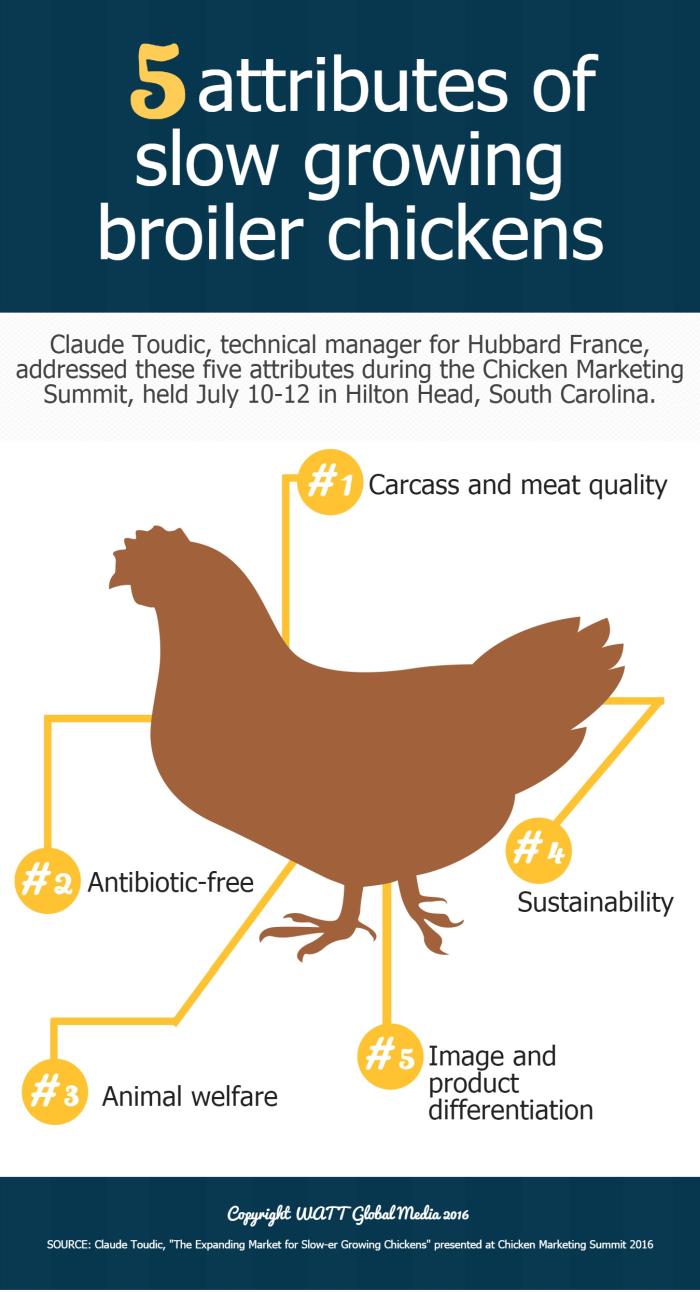
And performance wise…
…here’s a quick comparison graphic of the key differences between ‘slow-grow’ free range/organic birds vs. indoor reared commercial breeds, like Cobb 500, for example:
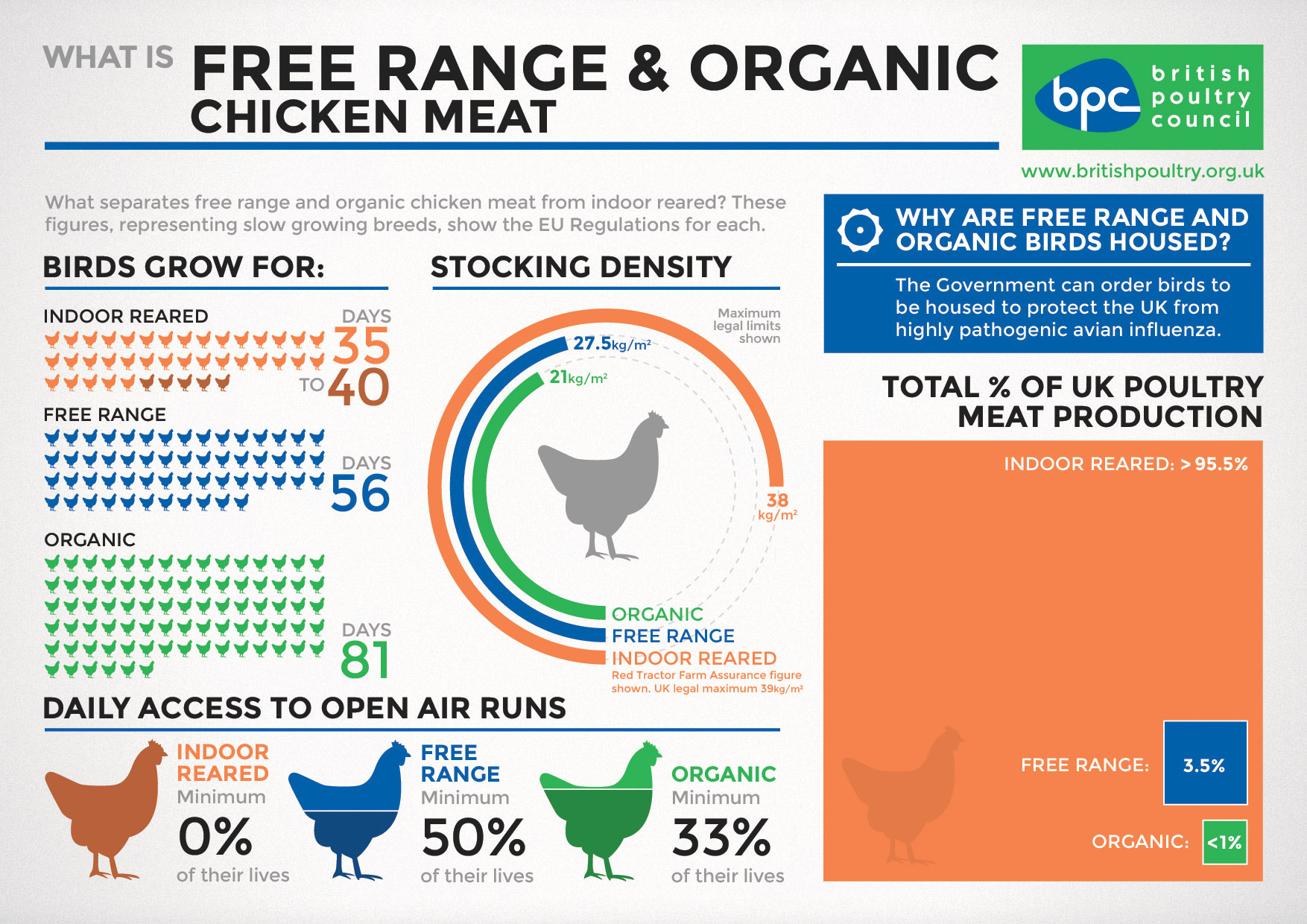
In short, ‘slow-grow’ differ in that they…
(And more so, if you aim for organic status further stipulations must be met on feed standards raising the direct input costs.)
But on the flip-side, the premium pricing paid for ‘slow-grow’ free range and organic poultry – at least in Emerson’s native Philippines – is buoyant. This makes the model sustainable, although more patient and labour intensive.
Here’s a brief cost-benefit consideration of raising ‘slow-grow’ organic birds:
“Organic free-range chicken meat is a premium item, but production must always comply with strict standards,” explains Emer. “Feeds can’t contain animal protein so we make a special mixture of corn, soy and vegetable pellets. We don’t use antibiotics or growth hormones, so our brown broilers take a longer time to reach a live weight of 1.5kg to 2kg – about 75 days compared to the 28-day-old chickens produced by factory farms. Still, our chickens retail for much more – up to 400 pesos or US$8 per kilogram compared with around 120 pesos or $2.5 for non-organic chicken, so the extra time, effort and love we give them pays dividends.”
Source: The Poultry Site
One reality of the premium free-range production model though is B-class birds.
Not all birds make higher the standard.
And so, to save losing out on potential gain (from substandard stock) – producers like Emerson need to get witty:
Not all birds make the cut, however, which is why Emer developed creative ways to sell rejected but still high-quality dressed chicken. “I sold quite a few batches of B-quality chickens at a loss before I realised they were perfectly acceptable for lower-tier markets. Today we offer these quality dressed chickens to supermarkets. I’m even coming up with my own barbequed chicken line. To succeed in the poultry business, you have to maximise involvement in each step of the supply chain.
“The last thing we want is to waste resources and opportunities.”
Source: The Poultry Site
And why stop there?
Now that Emerson has seen the commercial advantage in thinking quickly on his feet, he’s leveraging all sorts of advantages by thinking outside of the box:
“We’ll now dabble with native black Ulikba chickens, popular in Chinese restaurants. We’re developing our own feeds. Plus the barbecue line. Since that workshop with Mr Kiyosaki, I’ve found that the best way to really thrive is to innovate. By doing so, we’ll always sail smooth in a blue ocean.”
Source: The Poultry Site
On that note, let’s now examine the steps for starting your own free range poultry farm.
To start a free range poultry farm of any type successfully, you’ll need to follow these principle steps:
Reverse engineer your free range poultry farm earnings.
Decide what proportion of your personal outgoings that you want the farm to contribute.
For example, if your expected salary from running the farm is ₱187,400, then this sets your farms minimum EBITA (earnings before interest, tax and amortisation) at ₱187,400 – plus deductions.
Source : Salary Expert
Now, build a model to support your aim.
Discover your national, regional and local free range poultry market.
Find reports and studies either from governmental sources, news networks, organisations or commercial entities.
“The production of agricultural crops has been rising at a rate of 1.5–2 per cent per annum, whereas eggs and broilers have been shown to rise at a rate of 8-10 per cent per annum but the growth has been mainly restricted to commercial poultry.”
Source : Krishijagran
Then, analyse the detail for trends and insights that might help guide you in a prudent industry outlook.
Contact your local agricultural extension lead with government and ask them for your local free range poultry demo farm.